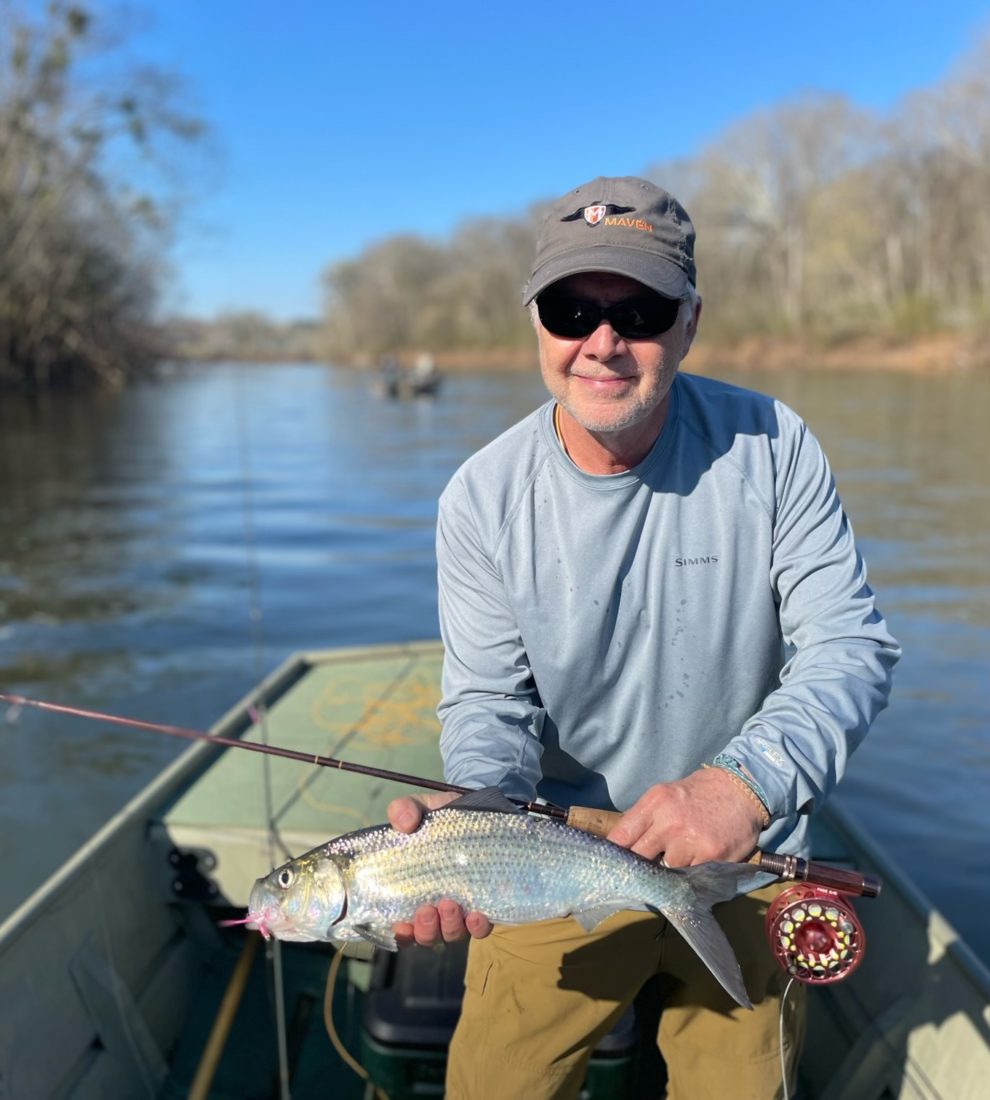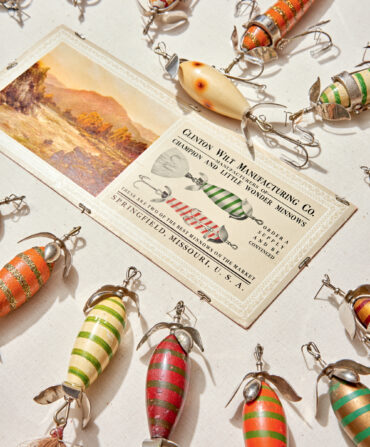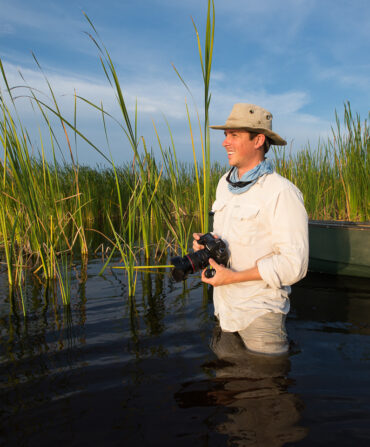The rapids boil the water as it braids through the weathered ridges of ancient saprolite that stitch the Roanoke River at Weldon, North Carolina. The rocks span bank to bank, and the river channels through giant knuckles of stone, plunging in foaming sheets that swirl and eddy far downstream. That’s where the hickory shad hang up—below the rapids, behind every boulder, downstream of every creek mouth and along every current seam or eddy line for miles down the river. The old-timers say the hickory shad start running with the first dogwood blooms, but if you wait till then, you’ve likely waited a week or two too long. It’s a mistake I try never to make.
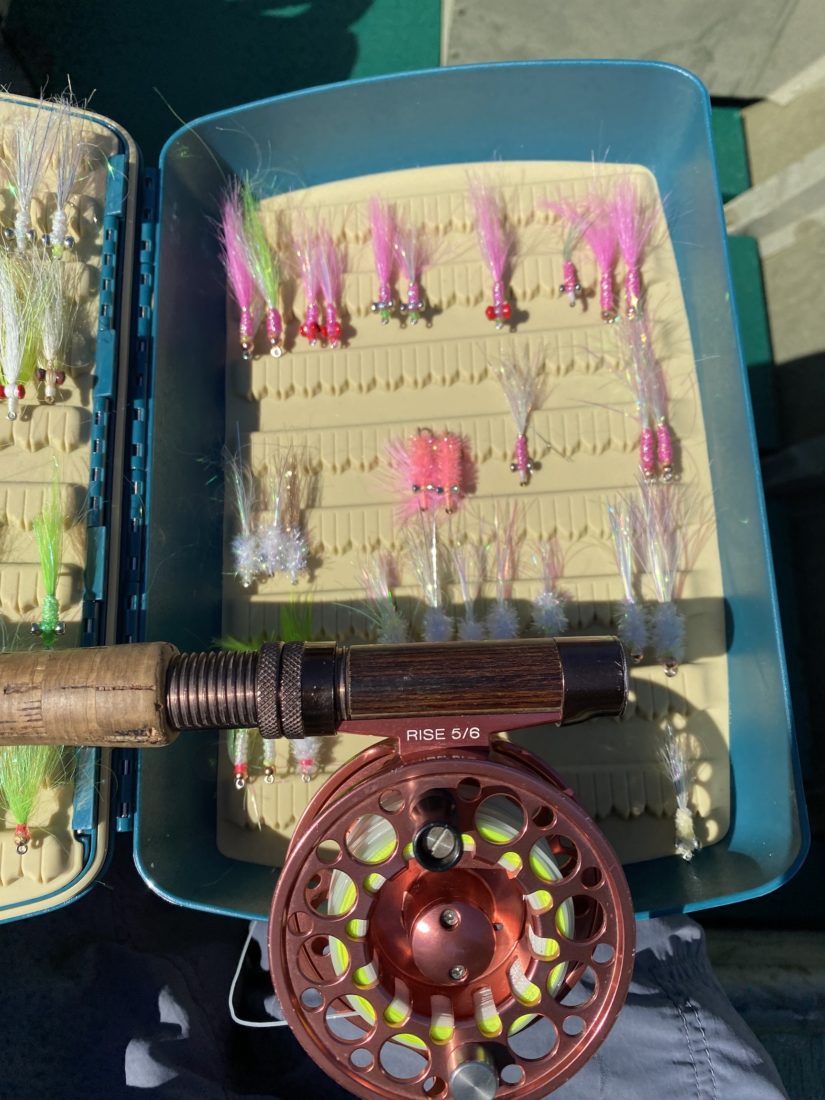
I cast perpendicular to the johnboat, the heavy weighted flyline unrolling like a Slinky toward the water. I count to seven—sometimes five, sometimes ten, depending on the river flow—and let the line straighten out behind me, downstream. I don’t have to wait long. With the third short strip of the line, the fish hits and the rod bends and there’s no feeling like that first hickory shad pulling on a fly rod: Spring is finally on the line.
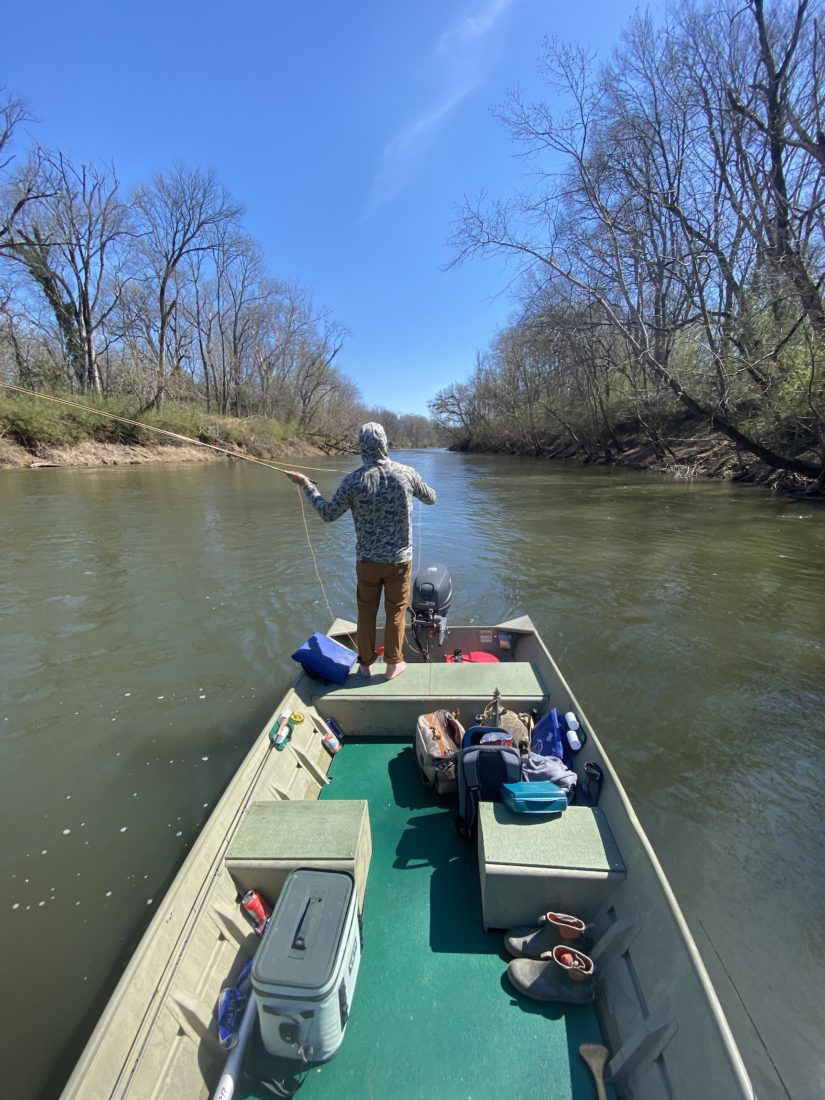
For the next two months, successive waves of a massive migration of hickory shad followed closely by American shad and striped bass will blitz Southern coastal plain rivers from Virginia to Florida. One day there will be none. The next day a few, and the day after, legions of fish will appear. Migrating from sounds and nearshore waters, these anadromous fish return to their natal breeding grounds by the tens of thousands each year. They surge upstream, in the Ogeechee of Georgia, the Pee Dee of South Carolina, and perhaps most famously, the Roanoke River near the North Carolina/Virginia border. They are met by anglers ashore and anglers in every kind of vessel: center consoles, johnboats, canoes, kayaks, rafts. Fish and fishermen, celebrating spring.
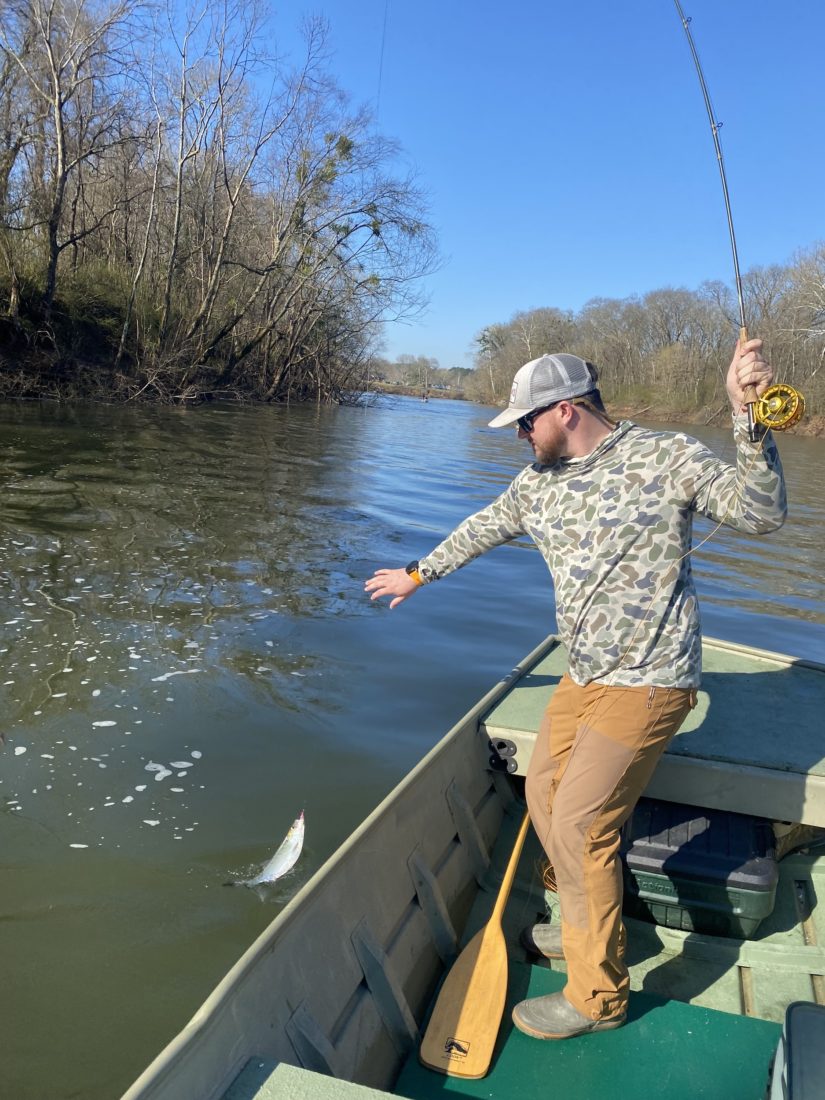
I play the shad, steering it out of the heavy current where it wants to go, and pluck it from the water at boatside. It’s a female, her belly swollen with roe. I typically keep a couple of roe fish from my first trip to the Roanoke, but it seems a shame to kill this inaugural shad, one so obliging as to nudge open the door to another season. I slip the hook from her mouth and let her swim out of my hand. In a single tail flick, she’s gone, a shimmer of silver and olive green that disappears like a spark into the night sky.
The timing differs slightly from river to river, but here on the Roanoke, the great waves of hickory shad are followed by a smaller push of the larger American shad, which can run to seven pounds and better. By April, the first striped bass will show, and on a good day, with a stout seven- or eight-weight, you can catch dozens. You will hardly be alone on the Roanoke when the striped bass run. The line at the boat ramp can be forty-five minutes long. There are fishing guides from hours away, locals on their lunch break, and boats as far as you can see. It’s no place for seeking solitude. But if you want to catch fish till your arms ache and your thumbs are shredded from striper teeth, come on.
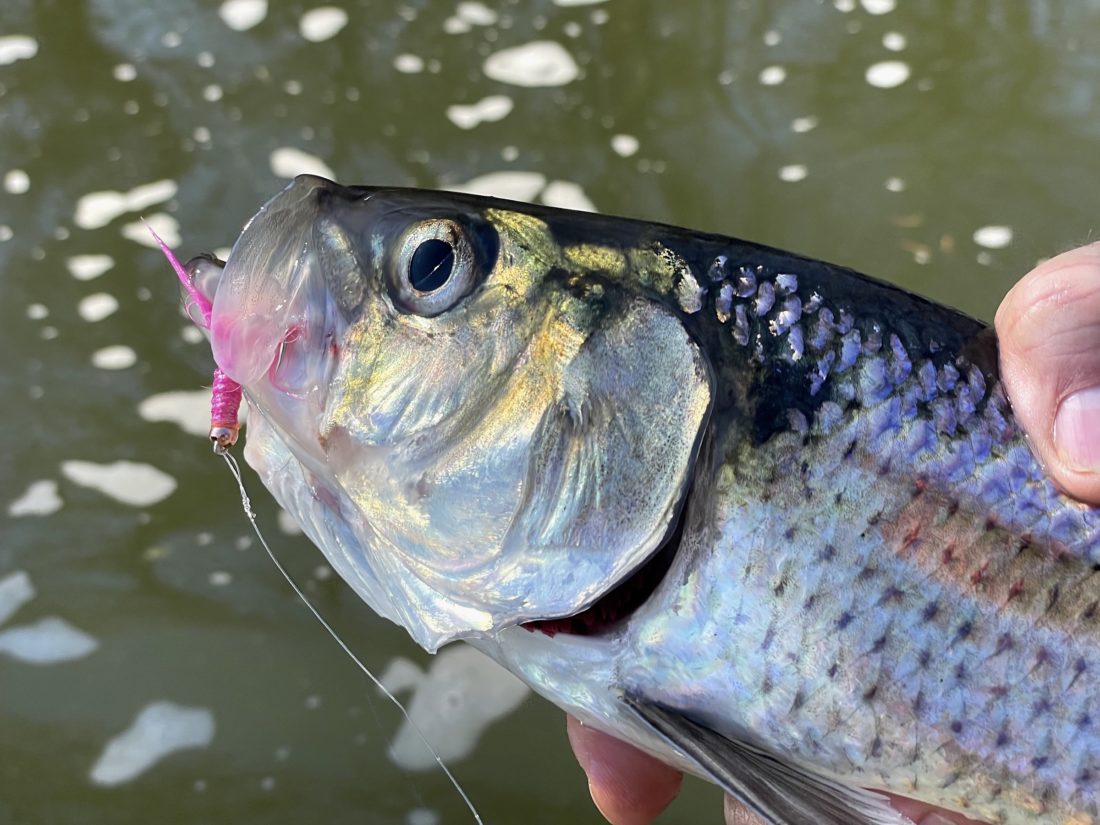
Before dams were built on Coastal Plain and Piedmont rivers, shad and stripers migrated for stupendous distances. American shad were known to ascend the Pee Dee River all the way to present-day Wilkesboro, North Carolina, 451 river miles from the ocean, and to swim up the Neuse River nearly 350 miles and up the Cape Fear nearly 300.
But for a brief window in spring, there is no lamenting what has been lost. When the shad come on every third cast, or second, or one after the other, there’s only time to reel and release and cast again. The river is alive, and the redbuds are in bloom, and it’s a short-sleeve day for the first time in months. If there’s another fish more worthy of celebration than a two-pound hickory shad, I’ve not yet met it.
Follow T. Edward Nickens on Instagram @enickens.


